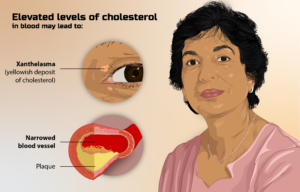How to Understand Your Unsaid Words – Communication is a vital aspect of human life. We communicate in various ways, including verbal and non-verbal communication. Non-verbal communication involves the use of body language, gestures, and facial expressions. It plays a significant role in conveying our thoughts and feelings, often more effectively than words. However, interpreting non-verbal communication can be challenging, especially when trying to understand someone’s unsaid words. In this article, we will explore how to understand your unsaid words and improve your non-verbal communication skills.
Understanding Non-Verbal Communication
Non-verbal communication refers to any message conveyed without the use of words. It involves various forms of body language, such as facial expressions, gestures, posture, eye contact, and tone of voice. Research has shown that non-verbal communication plays a crucial role in interpersonal relationships, accounting for up to 93% of communication effectiveness.
The Importance of Understanding Unsaid Words
Unsaid words refer to unspoken thoughts and feelings, which are often communicated through non-verbal cues. Understanding unsaid words is essential for effective communication, as it enables you to grasp the true meaning behind a person’s message. Failure to comprehend unsaid words can lead to misunderstandings, misinterpretations, and strained relationships.
Pay Attention to Body Language
One way to understand unsaid words is by paying attention to body language. Facial expressions, gestures, and posture can reveal a lot about a person’s thoughts and feelings. For example, crossed arms can indicate defensiveness or discomfort, while a furrowed brow can signify confusion or concern.
Observe Eye Contact
Eye contact is another crucial non-verbal cue that can help you understand unsaid words. Direct eye contact can signify confidence and honesty, while avoiding eye contact may indicate insecurity or dishonesty. However, it’s essential to consider cultural differences, as some cultures view direct eye contact as a sign of disrespect.
Analyze Tone of Voice
Tone of voice is another critical aspect of non-verbal communication that can reveal unsaid words. The tone of voice can convey emotions such as anger, sadness, happiness, and sarcasm. For instance, a high-pitched voice may indicate nervousness, while a low-pitched voice may indicate anger.
Understand the Context
Understanding the context of a conversation is crucial for interpreting unsaid words correctly. The context includes the setting, the people involved, and the topic of discussion. For instance, a person’s body language may differ when speaking to a close friend versus a stranger. Additionally, the topic of discussion can affect a person’s non-verbal cues. For example, discussing a sensitive topic may make a person defensive or uncomfortable.
Develop Empathy
Empathy is the ability to understand and share the feelings of another person. Developing empathy can help you understand unsaid words by putting yourself in the other person’s shoes. For example, if a person seems agitated, try to understand what might be causing their agitation and respond appropriately.
Practice Active Listening
Active listening is a technique that involves giving your full attention to the person speaking and understanding their message. Active listening can help you understand unsaid words by enabling you to pick up on non-verbal cues and respond appropriately. Additionally, active listening shows the other person that you value their message, leading to better communication and stronger relationships.
Overcome Communication Barriers
Communication barriers such as language barriers, cultural differences, and physical disabilities can hinder effective communication. It’s essential to understand and overcome these barriers to understand unsaid words accurately. For example, if communicating with someone who speaks a different language, use visual aids, gestures, and facial expressions to convey your message.
Conclusion
Understanding unsaid words is crucial for effective communication and building strong relationships. By paying attention to body language, eye contact, tone of voice, context, and developing empathy, you can better understand non-verbal cues and respond appropriately. Additionally, practicing active listening and overcoming communication barriers can further enhance your non-verbal communication skills.
Improving your non-verbal communication skills takes time and practice, but it’s worth the effort. By understanding unsaid words, you can improve your interpersonal relationships, both personally and professionally.
FAQs
- What are some common non-verbal cues to look out for?
- Some common non-verbal cues include facial expressions, gestures, posture, eye contact, and tone of voice.
- Can non-verbal cues be misinterpreted?
- Yes, non-verbal cues can be misinterpreted, especially if the context is not considered. It’s essential to consider the setting, people involved, and topic of discussion when interpreting non-verbal cues.
- How can I improve my empathy?
- You can improve your empathy by actively listening, putting yourself in the other person’s shoes, and trying to understand their perspective.
- What are some communication barriers that can hinder effective communication?
- Some communication barriers include language barriers, cultural differences, and physical disabilities.
- How can I overcome communication barriers?
- You can overcome communication barriers by using visual aids, gestures, and facial expressions, and being patient and understanding.




